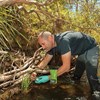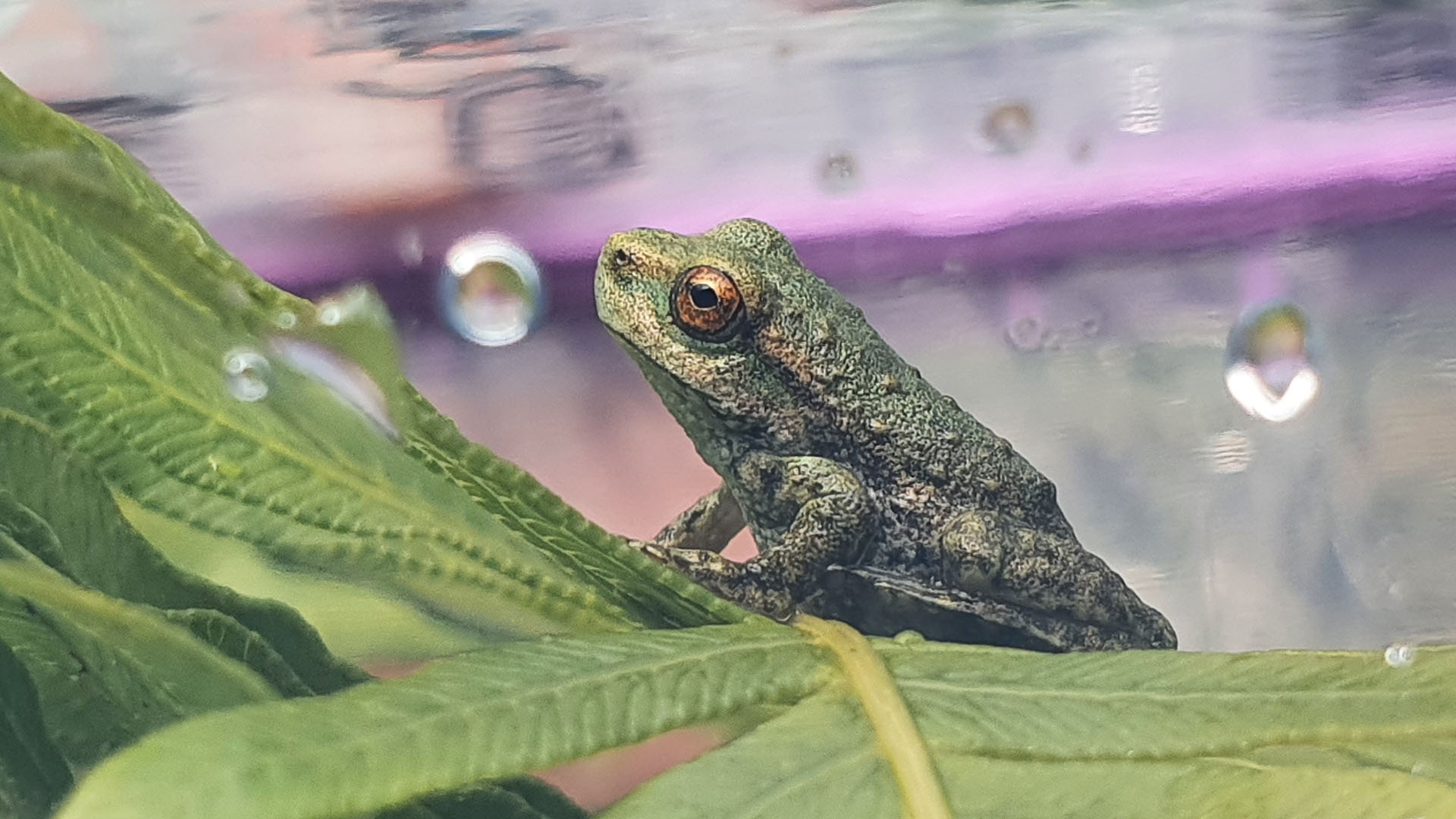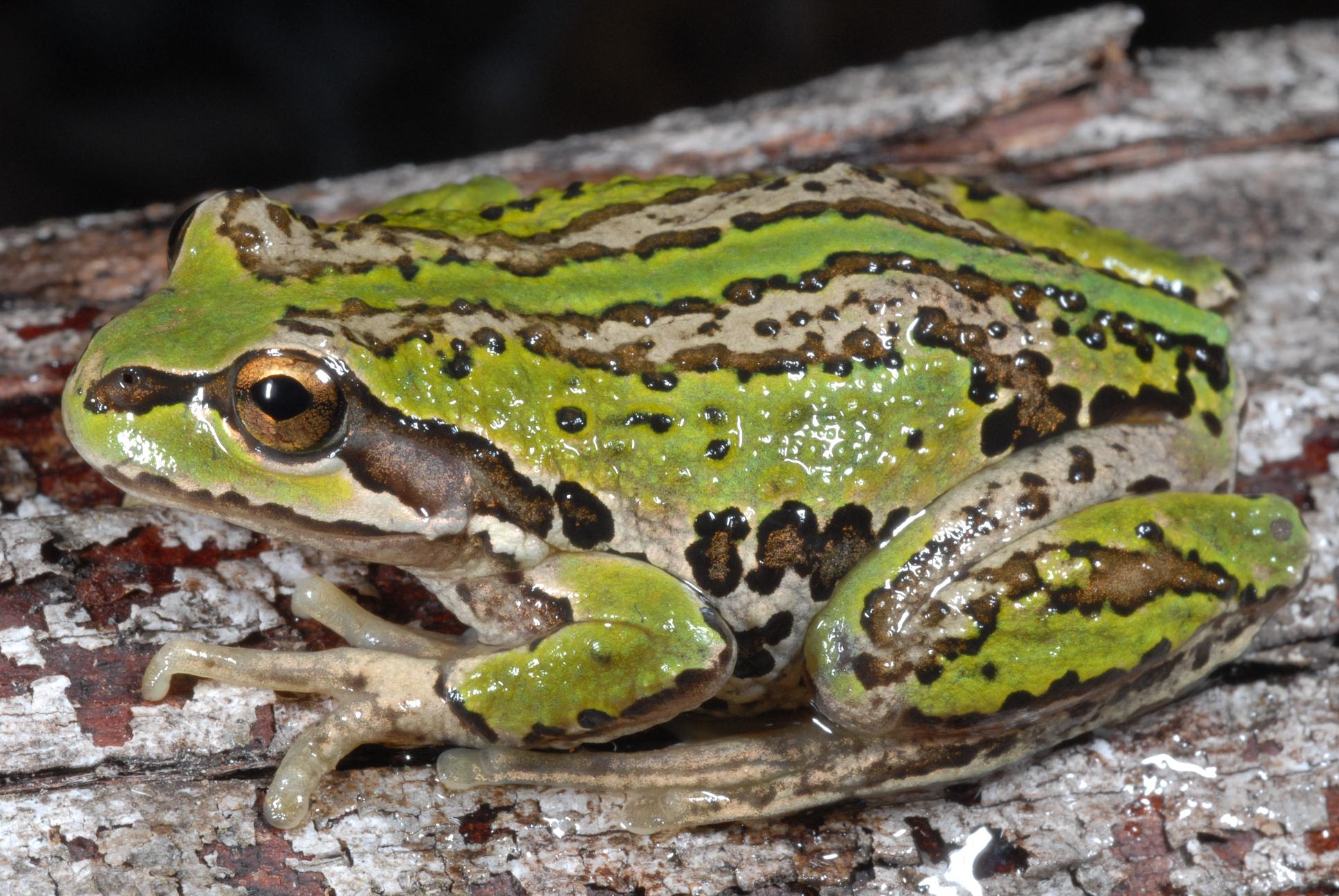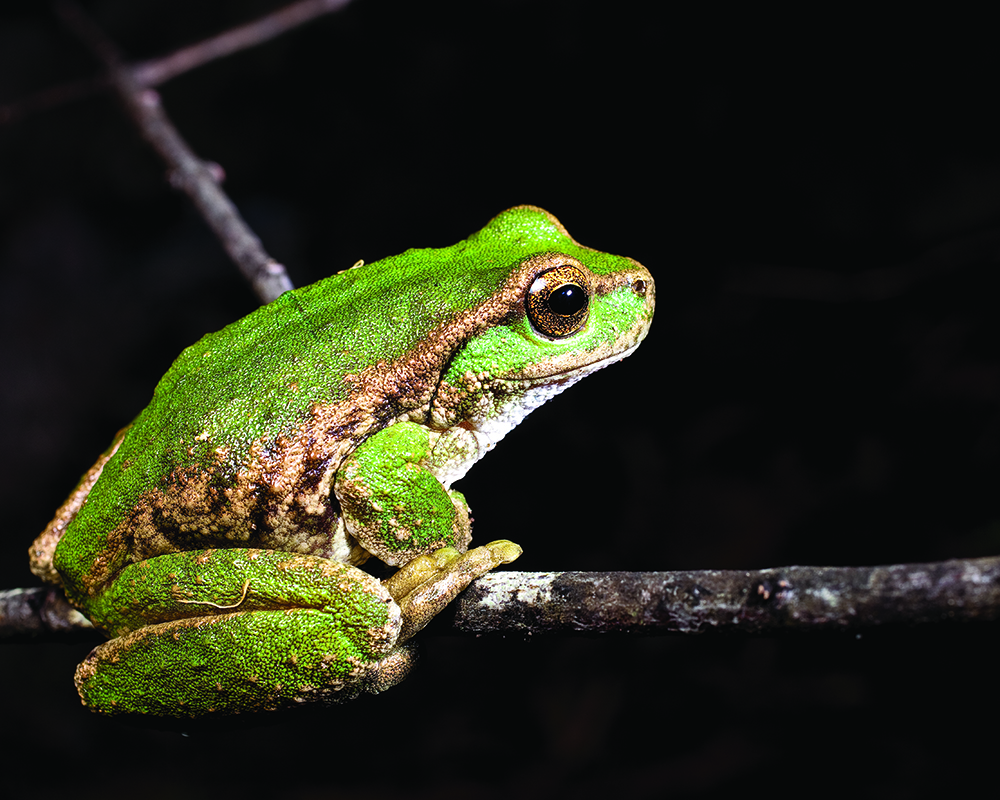
Refuges offer hope for the spotted tree frog
Monday, 24 September 2018The spotted tree frog was first recorded in 1901 and is found in cool, rocky mountain streams in south-eastern Australia. By the late 1980s the species was suspected to be declining, but we did not have the monitoring data to be sure or to work out what was going on. This was around the same time as a global amphibian crisis was being recognised. Since then, we have used long-term monitoring strategies, including mark-recapture and occupancy surveys, to understand population make-up and trajectories so we can distinguish population declines from natural population fluctuations.
This has not been easy. Surveys are best conducted at night and the sites are mostly remote and far apart, meaning lots of time on the road, very wet feet and very little sleep. We have also needed specialised statistical methods to evaluate the precision of our survey and monitoring methods in order to be confident of our evaluations of patterns of decline. The long-term monitoring work now provides strong evidence that the spotted tree frog has disappeared from 50% of known historic sites, is rare at all remaining sites and is likely to continue to decline unless we intervene.
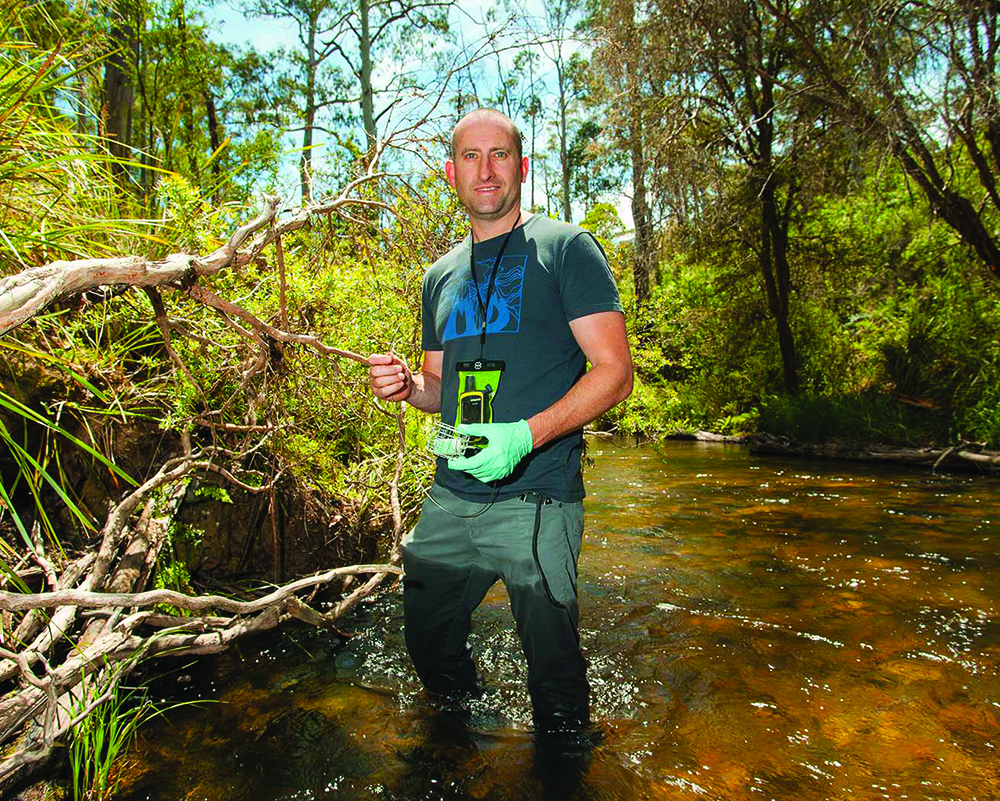
Researcher Matt West during spotted tree frog surveys. Image: Michael Williams It's a Wildlife
Causes of declines
The threats causing spotted tree frog declines have also been challenging to identify. Habitat disturbances, including mining activities (eductor dredging river gravel looking for gold) are likely to have caused some of the early changes – but those activities are no longer permitted. Ongoing changes were suspected of being caused by non-native fish species introduced for recreational fishing; subsequent experiments confirmed that these fish species eat spotted tree frog tadpoles. Importantly, this is completely different to native fish, who rarely eat the tadpoles.
In the late 1990s, another threat was recognised. Chytridiomycosis, a disease caused by chytrid fungus, not only turned up in spotted tree frog populations, but was quickly linked to an emerging global amphibian crisis. This disease caused a rapid decline and extinction in the only New South Wales spotted tree frog population.
We began to investigate the potential role of chytridiomycosis in spotted tree frog declines using a long-term mark-recapture program. This research confirmed that chytrid fungus was linked to population declines at other sites. We also found that populations could not withstand the combined impacts of chytrid fungus and tadpole predation by non-native fish. However, the findings also provided a glimmer of hope: under some circumstances, spotted tree frogs could cope with one of these two threats, but not both simultaneously.
Technical challenges
Chytrid fungus, the cause of chytridiomycosis, is a microscopic fungal pathogen with a free- swimming life stage that can survive in the environment and on other host species for extended periods. It has minimal effect on tadpoles but can be deadly to adults. Currently, there are no feasible methods to eliminate chytrid in mountain streams.
More technically feasible, at least in some circumstances, is removing non-native fish. While there are a variety of methods that could be used, this approach is far from simple: mountain streams are challenging because they provide fish plenty of places to hide, and their slippery rocks, deep pools, fast-flowing water, fallen timber and overhanging vegetation make them difficult to work in.
Top image: A spotted tree frog. Photo: Michael Williams It's a Wildlife
Social challenges
In addition to the technical challenges, there are social challenges when saving the spotted tree frog; in particular the high value placed on many non- native fish species, such as brown and rainbow trout, by the recreational fishing community. When we first proposed experimentally removing non-native fish from one site in the mid-2000s, the recreational fishing community were not supportive, and the initiative stalled.
Since then, a lot of work has gone into engagement and building relationships and trust with these groups, helping them to understand the plight of the frog and allowing us to better understand the values and areas that are important to recreational fishers. We hope frog refuge sites will be identified that have low recreational fishing value, so social impacts from non-native fish management will be minimised. We are all in agreement that both frogs and recreational fish species benefit from effective management of catchments.
Finding refuges
Given the technical and social challenges to threat mitigation, we have focused on seeking sites where one or both threats are absent. One such site has been found in New South Wales, and frogs have recently been released there. The early signs of this introduction are promising; however, this alone is not enough to conserve the spotted tree frog, particularly in Victoria where the vast majority of the species’ habitat occurs.
We are continuing our search for sites in Victoria where the twin threats are absent or reduced, but we are yet to successfully improve the conservation outlook for the species in that state. We’re also hoping that we might resolve the technical challenges of managing chytrid infection or the concerns of the community over managing non-native fish.
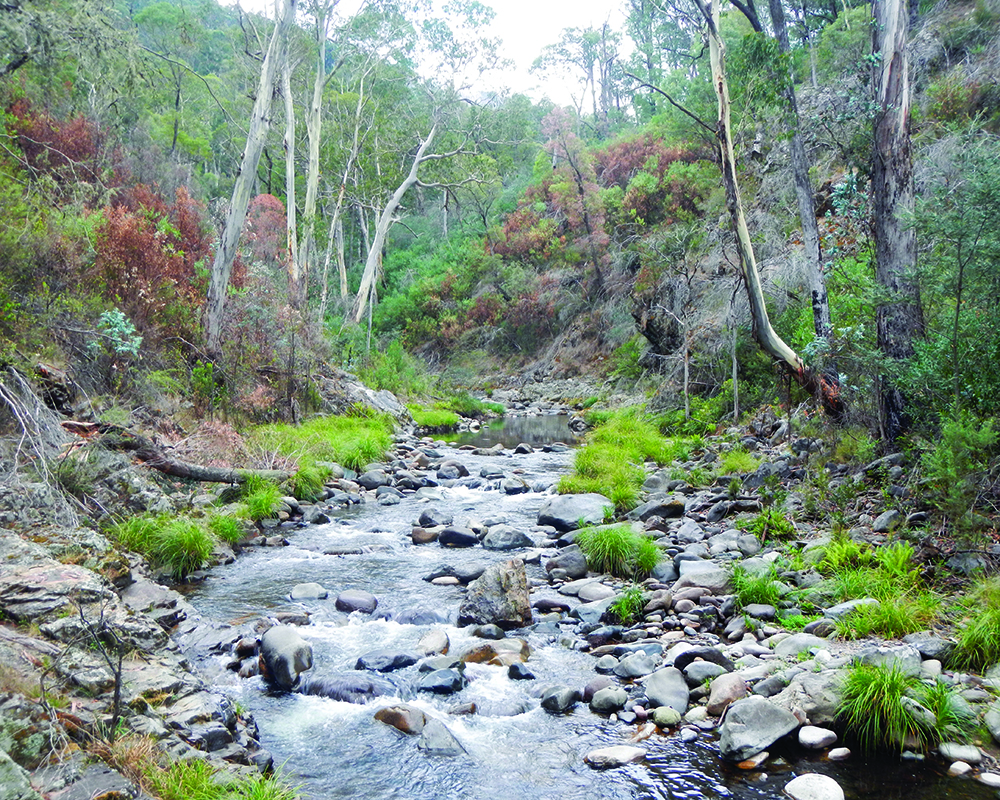
Spotted tree frog habitat. Image: Matt West

Spotted tree frog habitat. Image: Matt West
Partnering is key
Over the past 18 months, the relationship with the recreational fishing community has really strengthened, and they are now key supporters of actions to conserve spotted tree frogs. The Australian Trout Foundation, VRFish (the Victorian Recreational Fishing Peak Body) and Native Fish Australia
(Vic) are all now providing advice to the Spotted Tree Frog Recovery Team, which includes representatives from the Victorian Department Environment, Land, Water and Planning, New South Wales Office of Environment, Arthur Rylah Institute, Zoos Victoria, Amphibian Research Centre, Northern Territory Government and The University of Melbourne. Together we are considering options to trial fish management, while we continue to look for sites where the impacts of non-native fish and chytrid fungus are low.
These fishing groups are also supporting our conservation efforts, by writing and posting articles on spotted tree frogs, educating their members, and providing information that will be crucial in our next steps to save this species.
Species conservation is clearly difficult. However, we are experiencing renewed hope. With the new partnership with recreational fishing groups and the support of key funding organisations, we may soon be able to overcome technical challenges to threat management and help conserve the endangered spotted tree frog.
For further information
Matt West
matthew.west@unimelb.edu.au
matthew.west@unimelb.edu.au
Top image: A spotted tree frog. Photo: Michael Williams It's a Wildlife
